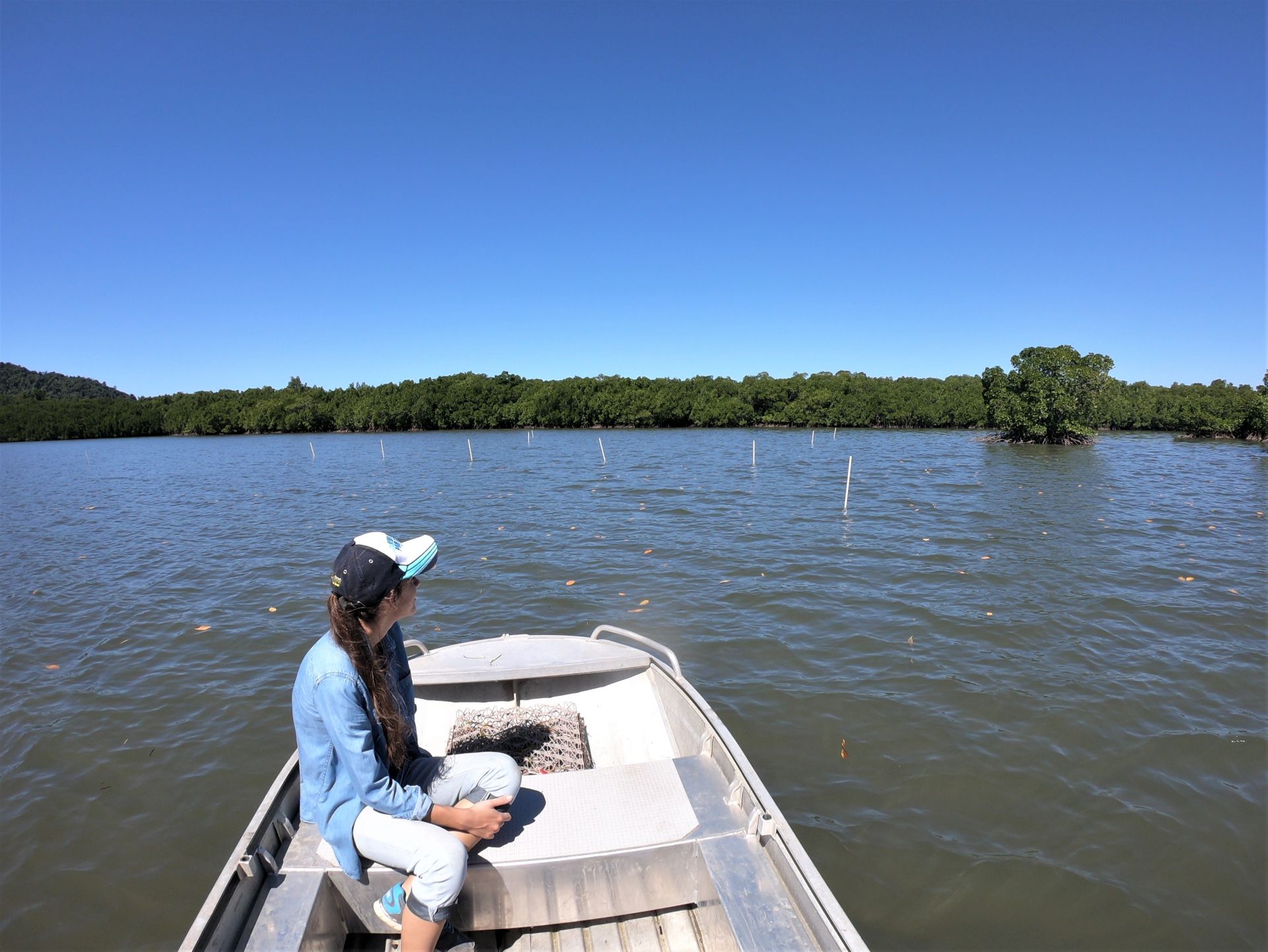Media Releases
JCU in ground-breaking effort to restore lost GBR Seagrass meadows

Scientists and community volunteers will brave crocodiles, jellyfish and deep mud in an attempt to bring back seagrass meadows lost for over a decade at Mourilyan Harbour south of Cairns.
The work is being led by James Cook University’s Seagrass Ecology Lab within the Centre for Tropical Water and Aquatic Ecosystem Research (TropWATER), in partnership with OzFish Unlimited and local Mandubarra Traditional Rangers.
Lab leader Associate Professor Michael Rasheed said these seagrass meadows were once thriving fish habitats full of juvenile prawns and fish but they have been absent from the harbour since 2010.
“Several years of heavy rainfall and cyclones leading up to 2010 deprived the marine plants of the light that they need to grow and being isolated from any other similar seagrass meadows, there was no way for them to come back by themselves,” he said.
Following the initial success of small-scale planting trials last year, the team is following up with a second trial adapting new techniques including deploying seagrass shoots attached to biodegradable mesh made from potato starch into areas of seagrass loss.
“The aim is to produce a blueprint for future tropical seagrass restoration throughout the Great Barrier Reef and to return lost seagrass meadows and their associated fish into the harbour,” said Dr Rasheed.
Project leader Dr Paul York said earlier restoration trials in 2020 showed initial success with good survival of shoots after several months. However, record rainfall in the Moresby catchment in April of this year impacted the project with only a few plants remaining in May 2021.
“A key to restoration success in tropical climates is to get the plants established in the dry season with enough reserves for them to survive through their first wet season when growing conditions are not as favourable,” said Dr York.
The team face some tough challenges. “Working in estuaries in northern Australia we have to deal with crocodiles, marine stingers and mudflats where you can sink up to your waist so we need to be inventive with our methods,” said Dr York.
“We are developing methods where we can deploy planting units from boats into the shallow waters where seagrasses grow and then monitor their survival with drones and cameras at low tide,” he said.
There is strong support for the project from the local recreational fishing community, with volunteer group OzFish Unlimited collaborating with the project.
“Seagrasses provide a range of ecological and economic benefits and are an amazing nursery ground for local fish species. Getting the seagrass meadows back will be good news for local fishers,” said Ellie Sales the North Queensland project officer from OzFish.
They are also critical to healthy waterways and marine environments - they can store carbon in their sediments to help mitigate climate change, provide a food source for turtles and dugong, and filter sediment and nutrients from coastal waters.
“This makes them a really important indicator of marine and estuarine environmental health and for reporting on environmental conditions such as in the Wet Tropics Healthy Waterways Health Report Card,” said Professor Rasheed.
Chair of the Wet Tropics Waterways Partnership Professor Steve Turton said “Getting the seagrasses back at Mourilyan Harbour could result in not only a greatly improved estuarine health score for the region but also a return of critical services that the local seagrasses provide.”
Once successful restoration methods have been established, the partnership will be looking for funding opportunities to scale up their work to restore the seagrass in the harbour back to its original state and apply this knowledge more broadly along the Great Barrier Reef World Heritage Area coast.
Associate Professor Michael Rasheed
E: michael.rasheed@jcu.edu.au